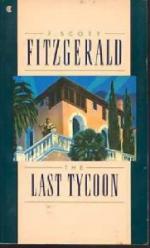|
This section contains 3,533 words (approx. 12 pages at 300 words per page) |

|
Often well educated in white schools and comfortable in white society, the first generation of Indian leaders to emerge on the national level included persons like Charles Eastman and Gertrude Bonnin. Yet despite their acceptance of assimilationist ideals, they also contributed a new ideal of their own: a Pan-Indian identity that emphasized the commonness of Indians of all tribes. They recognized things that Indians held in common, much more than previous tribal leaders had done. While they valued a "civilized" lifestyle, they also respected their native traditions enough to recognize the injustices of the federal colonial domination.
In October of 1931, Fitzgerald went to Hollywood where he made $6,000 for five weeks' work at M-G-M. There he met Irving Thalberg, who had come to Hollywood in 1919 to assist Carl Laemmle at Universal Pictures and who, in the meantime, had worked his way to the very top of the industry. In...
|
This section contains 3,533 words (approx. 12 pages at 300 words per page) |

|


